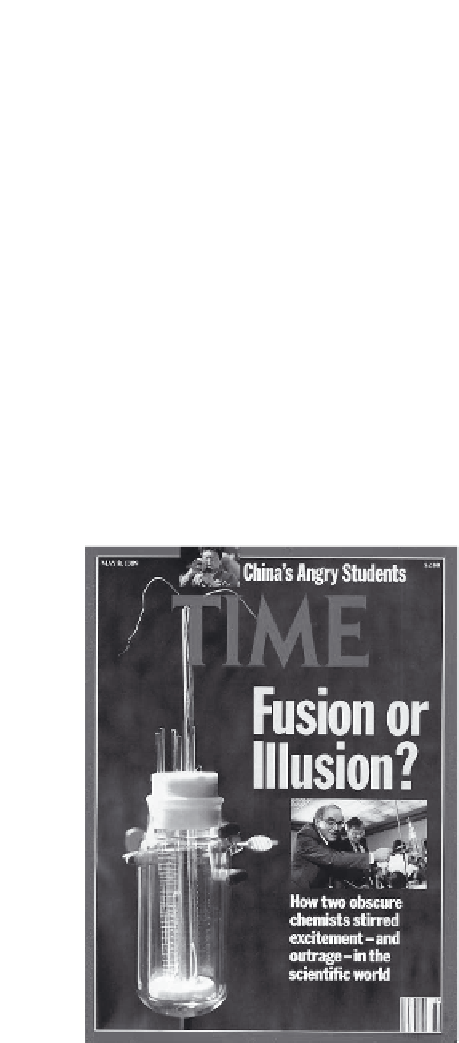Environmental Engineering Reference
In-Depth Information
began in 2009 and will be complete by 2012. We are moving, or being
moved, towards compact fluorescent light bulbs. They are more efficient:
a 20-watt fluorescent bulb apparently produces the same amount of
lumens, the scientific measurement of light, as a 100-watt incandescent
bulb (even though they often look a little dimmer). The new bulbs take
more money and energy to make than the old ones, but they use less
energy and last between 5 and 16 times longer. They don't last forever,
but they are certainly longer-life.
Cold fusion or con-fusion?
We have already seen in chapter five
how enormously difficult it is to replicate the huge power, temperatures
and pressures of the sun to achieve nuclear fusion. So there is a natural
temptation to welcome any easier alternative method of nuclear fusion,
such as that which two University of Utah scientists appeared to offer in
1989. Martin Fleischmann and Stanley Pons created a sensation when
they announced they had achieved nuclear fusion at room temperature.
In a table-top experiment they reportedly carried out electrolysis of
heavy water (richer in deuterium than normal water) with a palladium
electrode and produced excess heat on a scale that, they said, only a
nuclear reaction could explain.
Other scientists,
however, failed to
replicate their “cold
fusion” experiment
and the pair lost
credibility - although
not to everyone. Eugene
Mallove, an experienced
science writer, took up
their cause. He wrote a
book, called
Fire from
Ice: Searching for the
Truth behind the Cold
Fusion Furore
. Claiming
that Fleischmann
and Pons had made
a breakthrough in
producing “over-unity
energy” - getting
more than they put































































